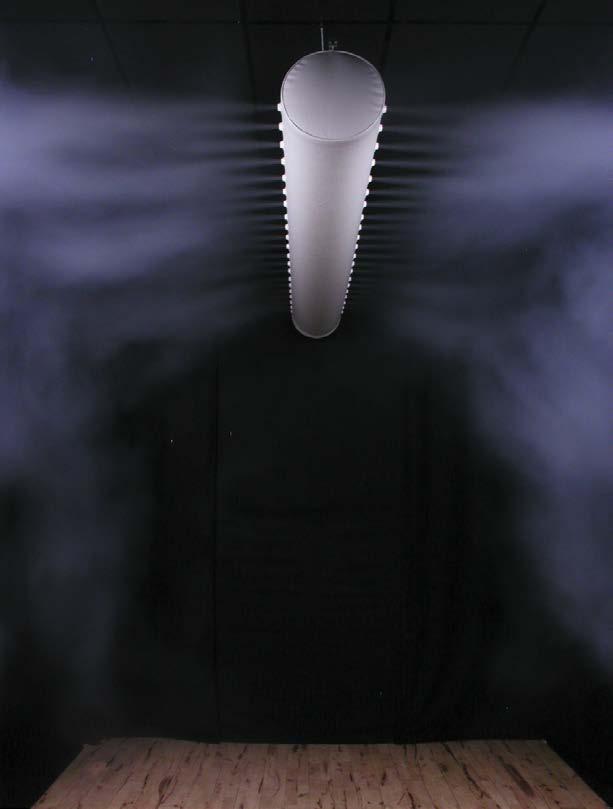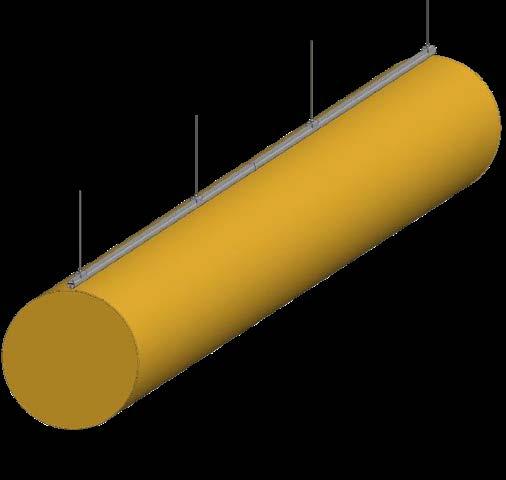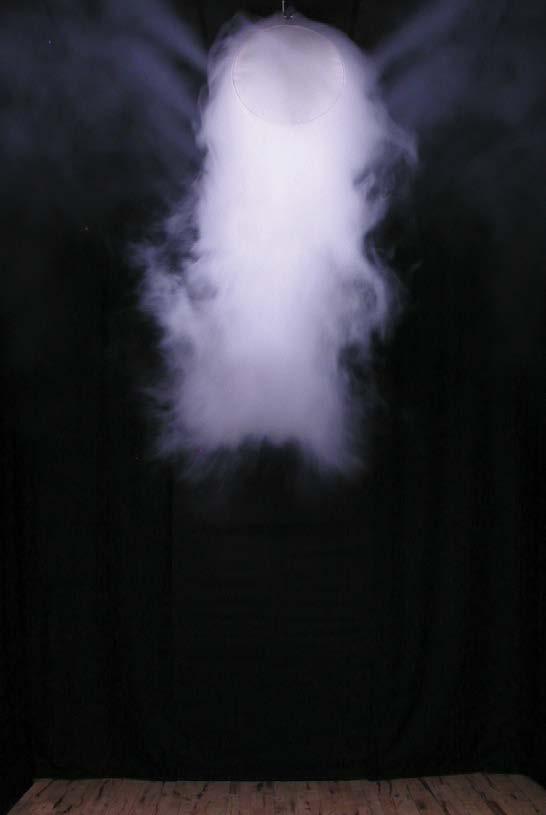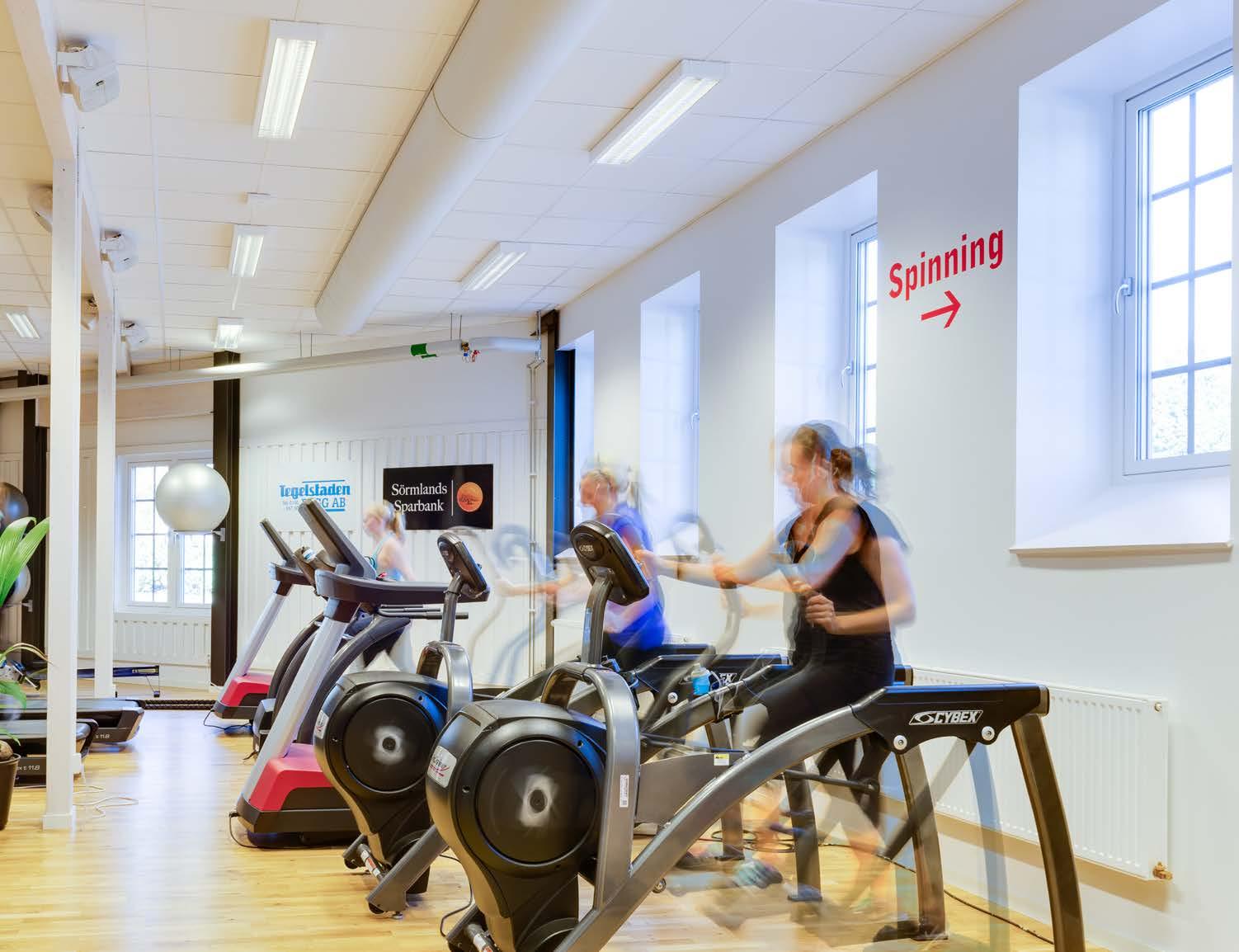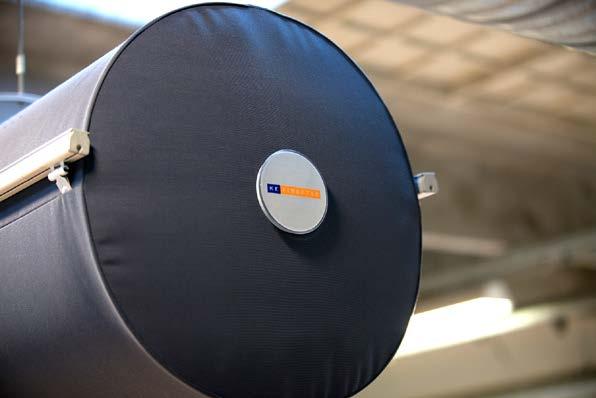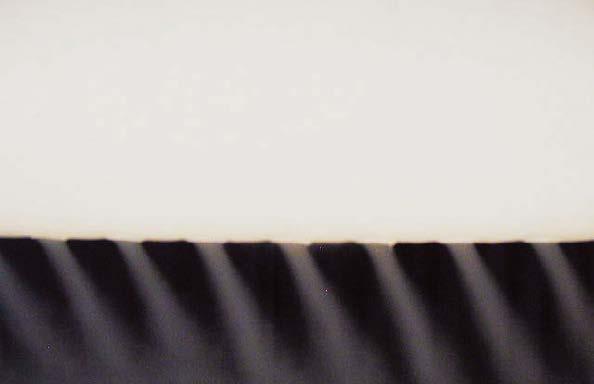
1 minute read
Dimensioning TBV systems
Dimensioning TBV systems.
To be able to dimension a textile based ventilation system, it is important to understand a number of essential parameters and concepts. A textile based ventilation system is not fundamentally different from conventional ventilation systems, but there are a number of key points where it is important to be extra cautious. A brief description is given below of the key parameters and concepts used when dimensioning KE Fibertec’s textile based ventilation systems.
KE-Low Impulse System
KE-Inject System

KE-DireJet System Delivery areas

The entire surface of the KE-Low Impulse System is permeable, which means that the total delivery area corresponds to the geometric surface area. The geometric surface area, A, is given in [m2].
In the case of the KE-Inject System and the KE-Inject Hybrid System, KE Fibertec has, for the sake of manufacturability, grouped the holes in different standard patterns, depending on which type is selected, see page 46.
A standard pattern is made up of an exact number of hole steps and the delivery area can only be modified by changing the number of hole rows. Consequently, the unit, number of hole rows, is used as a parameter for the delivery area of the KE-Inject System. In the case of the KE-Inject Hybrid System, the whole of the duct’s surface, including the holes, will act as the delivery area.
In the case of the KE-DireJet System and KE-DireJet Hybrid System, the delivery area depends on whether a Ø12 mm, Ø18 mm, Ø24 mm, Ø48, or Ø60 mm nozzle is selected, as well as how many nozzles are used per running meter of ducting. With the KE-DireJet Hybrid System, the entire duct surface, including the nozzles, will act as the delivery area.


